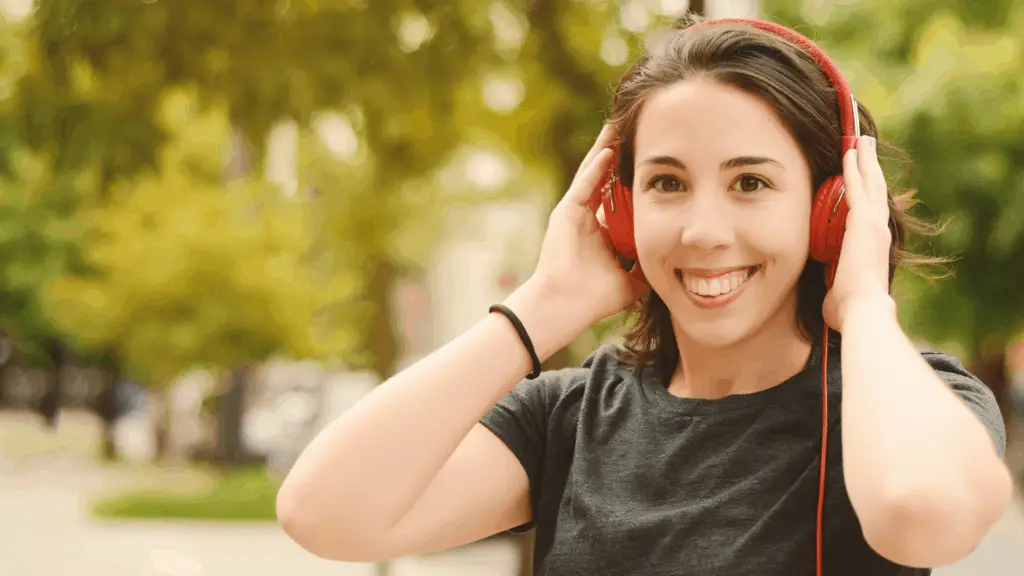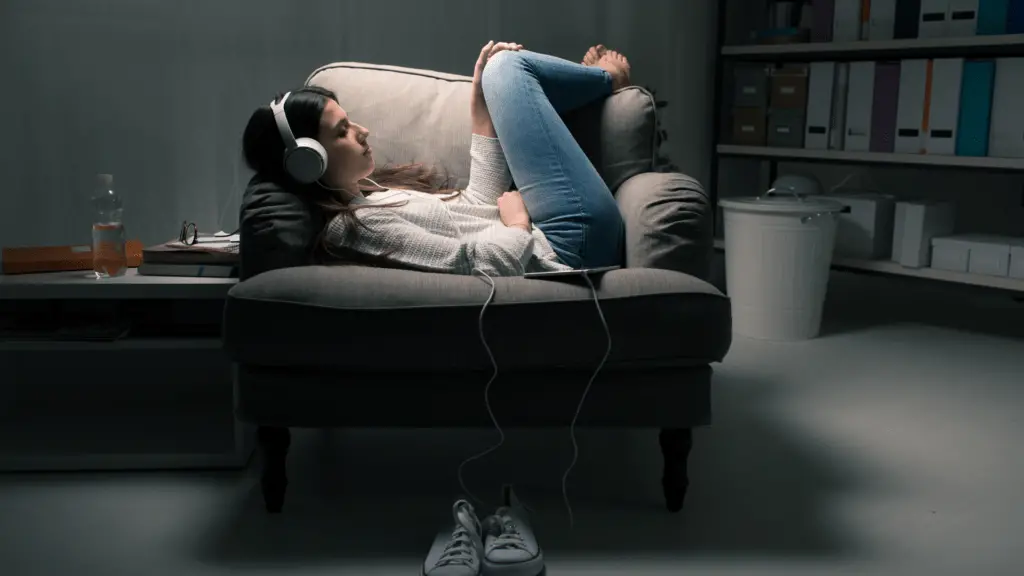This article is evidence-based, verified by Ashleigh Willis, a Neuroscience Ph.D. candidate.
Autonomous sensory meridian response (ASMR) appears to have taken the internet by storm. You might be familiar with the world of ASMR from YouTube. ASMR can seem quite confusing for the uninitiated. Without prior knowledge, ASMR videos are a peculiar mix of soft noises coupled with random movements. Although seeming somewhat unusual, ASMR materials draw in millions of viewers and listeners. So, what’s causing the hype?
What is ASMR? 🎙️

ASMR is the stimulation people experience in response to audio or visual triggers. The phenomenon induces ‘tingles’ across the head, neck, and shoulders.
These ‘brain tingles’ are usually associated with positive enhancements to mood. Sometimes people even report euphoria. The sensation is described by some to be like the chills you can experiences when listening to powerful music. However, in ASMR, these feelings are caused by repetitive and straightforward sounds or movements. Popular ASMR triggers include:
- whispering
- light finger tapping
- soft stroking noises
- crisp noises
- watching a gentle, rhythmic motion.
Scientists have reported that ASMR triggers usually meet two distinct criteria. These are social intimacy and dynamic movement. For example, watching someone brush their hair or put on makeup can trigger ASMR experiences.
This is may be because of the combination of the intimate nature of the act. Both of these acts also include repetitive movements and soft sounds. One paper reported that experiences such as having a clinician examination, can induce ASMR.
There are thousands of ASMR videos available on video platforms such as YouTube. Online forums also draw in hundreds of thousands of subscribers who share their experiences of ASMR. The use of ASMR is wide-spread use and easy to access.
Yet, scientists still don’t know much about how it works. One 2018 study has shown a clear physiological response to ASMR in some people. The researchers found that heart rate and skin conductance increased during ASMR.
At present, there is very little research about what triggers these feelings. We’re also in the dark in terms of understanding the underlying brain mechanisms of ASMR. Furthermore, scientists don’t know why only some people are susceptible.
People who’ve experienced ASMR proclaim the powerful effects of the experience can have on mental well-being. This has led to some hefty claims about the benefits and treatment uses of ASMR.
Some people have speculated that ASMR might be useful in the treatment of disorders. This includes stress, sleeping problems, panic, anxiety, and depression. However, there’s no empirical research to back up these claims yet.
In the case of autism, many ASMR proponents have suggested that it can help children to sleep. They also state that it can help with behavior regulation. The stress and anxiety-relieving benefits have led to suggestions that ASMR may work as a therapy for autism.
Unfortunately, there aren’t many controlled research studies to support the beneficial claims. Also, some people with autism self-report negative experiences with ASMR.
What do we know about the benefits of ASMR? 🎙️

Hundreds of popular magazine articles have been published which attest to these benefits. However, searching “autonomous sensory meridian response” on a scientific database shows different results. Since 2013, there have only been 23 documented, peer-reviewed articles about ASMR.
Research is gradually beginning to uncover some of the mysteries of ASMR. Let’s take a look at some of the common claims relating to the ASMR. Drawing from the current scientific research, we’ll investigate what we actually know about the phenomena.
“ASMR improves mood and can treat depression.”
This idea that ASMR can boost mood isn’t surprising. After all, many people report feelings of euphoria during and after an ASMR session. This has led to the suggestion that ASMR might be an effective treatment for low mood and depression.
One observational study examined how ASMR might modulate mood. Scientists looked at self-reports. They found that the majority of participants said that triggering ASMR helped with symptoms of depression.
However, this temporary life in mood appears to disappear quickly—the mood-boosting benefits to ASMR fade only a few hours after tingling sensations.
ASMR might provide temporary relief from the low mood for some. But, there’s no evidence to suggest that the experience can give effective or long-term therapy.
“ASMR induces and improves sleep.”
Studies have found that many people who take part is ASMR prefer to trigger it before bed. Many people report feeling much calmer and more relaxed after triggering their ASMR. It’s thought that this can help people fall asleep and experience better sleep quality. These experiences have led people to speculate that ASMR might be able to treat sleep disorders such as insomnia.
There are a few small studies that have investigated the usefulness of ASMR triggers to sleep. In one 2019 study, the researchers looked to understand whether ASMR triggers could provide a helpful add-on therapy. Specifically, they combined ASMR triggers with binaural beats. Binaural beats are acoustic beats of two tones, which are listened to in each ear simultaneously.
These beats can entrain brain activity and set up optimal brain conditions for sleep. However, these types of tones can be uncomfortable for users to listen to in bed. This can actually prevent their usefulness. The researchers showed that combining binaural beats with ASMR triggers induced sleep. More importantly, these sounds appeared to help keep users in a relaxed state.
This study suggests that using ASMR triggers may be useful for some types of sleep disorder. However, they may need to be used with other therapies to reap the full benefits.
Autism is often associated with problems sleeping. Hence, some people have suggested using ASMR triggers that may help. This hasn’t been empirically studied. When considering autism, we have to remember the differences that patients have in sensory processing.
The average experience may be relaxing, but there’s potential for this to be very different in autism. This is likely due to the altered way in which they process some visual and auditory stimuli.
“ASMR can treat anxiety-related disorders.”
At present, there aren’t many empirical studies that can provide evidence to support or reject the claim that ASMR reduces anxiety. There are no experimental studies that have investigated this proposition.
The most clinically relevant study on the effects of ASMR was published in 2015. In this study, the authors used surveys to understand more about the demographic of people who use ASMR. They also used questionnaires to assess ASMR triggers and why people engage in ASMR.
The researchers found that many users find ASMR relaxing. They also revealed that a lot of people use ASMR to self-medicate stress and anxiety.
“People with autism are more susceptible to ASMR.”
When searching the internet, you may come across articles that suggest people with autism may be helped explicitly by ASMR. Some also suggest that people with autism are more susceptible to the phenomenon.
As good as these claims sound, there aren’t any scientific studies to support this. Additionally, some people with autism have reported having negative feelings in response to ASMR. This may be due to a few reasons:
- ASMR is thought to rely on the default mode network (DMN), which is known to function abnormally in autism. Several brain-scan studies have suggested that ASMR activates and relies upon the DMN. The DMN is a large-scale network of brain regions that communicate when we’re at rest or daydreaming. Previous research has shown abnormalities in the functional connectivity of the DMN in people with autism. There’s no definitive evidence to say that this would alter the experience of ASMR in people with autism. But, if a critical underlying brain network that ASMR relies on is disrupted, it would not be surprising if the experience were different.
- Some people with autism have a tough time with sensory stimuli. As any carer for someone with autism will know, some types of sensory stimuli can be overwhelming. These can include loud or new noises and vary across individuals. That’s not to say all people with autism will struggle with ASMR. However, use caution when thinking about using ASMR with someone who has autism.
- People who are most susceptible to ASMR score highly on extroversion and empathy on personality tests. While these traits can be present in some people with autism, they are often less prominent. In particular, people with autism often struggle with empathy. This goes against the idea that people autism would be “more susceptible” to ASMR.
The take-home message 🎙️

Phenomena such as ASMR can be complicated to study empirically. Firstly, because only a subset of people actually experiences these sensations. Secondly, the triggers and uses vary across individuals. This means that it’s hard to design a well-controlled and adequately powered clinical study.
Despite this, researchers should try their best to better understand of ASMR. Sleep disorders, depression, and anxiety are on the rise in modern society. Hence, it’s essential to understand all therapies which may help.
For people with autism, ASMR doesn’t appear to provide any specific benefits. While some patients may find the experiences calming, others may find the opposite.
Does Hypnosis Work For People With Autism?👨⚕️

Ashleigh Willis is a final year Ph.D. candidate in Neuroscience at the University of Glasgow. Her research investigates the genetic and environmental contributors to mental health and neurodevelopmental conditions. Ashleigh has built research collaborations with McGill University and received specialist training at the Centre for Neuroscience at Montreal General Hospital, McGill University Health Centre. She is also an active member of the Society for Neuroscience. Ashleigh holds an Honours in Psychology, an MRes in Neuroscience, and is fascinated by the neuronal circuits which make us who we are. Ashleigh is passionate about providing a deeper understanding of mental health conditions and sharing an accurate and de-stigmatizing message through talks for organizations such as TEDx, Pint of Science, and the Scottish Funding Council.
You can follow Ashleigh on her Youtube channel here
References
- Barratt EL, Davis NJ. Autonomous Sensory Meridian Response (ASMR): a flow-like mental state. PeerJ. 2015;3:e851. Published 2015 Mar 26. doi:10.7717/peerj.851
- Cash DK, Heisick LL, Papesh MH. Expectancy effects in the Autonomous Sensory Meridian Response. PeerJ. 2018;6:e5229. Published 2018 Aug 22. doi:10.7717/peerj.5229
- Keizer A, Chang THR, O’Mahony CJ, Schaap NS, Stone KD. Individuals Who Experience Autonomous Sensory Meridian Response Have Higher Levels of Sensory Suggestibility. Perception. 2020;49(1):113‐116. doi:10.1177/0301006619891913
- Janik McErlean AB, Banissy MJ. Assessing Individual Variation in Personality and Empathy Traits in Self-Reported Autonomous Sensory Meridian Response. Multisens Res. 2017;30(6):601‐613. Published 2017 Jan 1. doi:10.1163/22134808-00002571
- Lee M, Song CB, Shin GH, Lee SW. Possible Effect of Binaural Beat Combined With Autonomous Sensory Meridian Response for Inducing Sleep. Front Hum Neurosci. 2019;13:425. Published 2019 Dec 2. doi:10.3389/fnhum.2019.00425
- Lloyd JV, Ashdown TPO, Jawad LR. Autonomous Sensory Meridian Response: What is It? and Why Should We Care?. Indian J Psychol Med. 2017;39(2):214‐215. doi:10.4103/0253-7176.203116

- Padmanabhan A, Lynch CJ, Schaer M, Menon V. The Default Mode Network in Autism. Biol Psychiatry Cogn Neurosci Neuroimaging. 2017;2(6):476‐486. doi:10.1016/j.bpsc.2017.04.004
- Poerio GL, Blakey E, Hostler TJ, Veltri T. More than a feeling: Autonomous sensory meridian response (ASMR) is characterized by reliable changes in affect and physiology. PLoS One. 2018;13(6):e0196645. Published 2018 Jun 20. doi:10.1371/journal.pone.0196645

- Rouw R, Erfanian M. A Large-Scale Study of Misophonia. J Clin Psychol. 2018;74(3):453‐479. doi:10.1002/jclp.22500
- Smith SD, Katherine Fredborg B, Kornelsen J. An examination of the default mode network in individuals with autonomous sensory meridian response (ASMR). Soc Neurosci. 2017;12(4):361‐365. doi:10.1080/17470919.2016.1188851

